








| Great White Egret (Ardea alba (Linnaeus, 1758)) |









|
|
Scientific name: Ardea alba (Linnaeus, 1758) Common name: Great White Egret Other names: Great Egret, Common Egret, Great White Heron. French name: Grande aigrette Order: Pelecaniformes Family: Ardeidae Size: Body size: 94 to 104 cm; Wingspan: 131 to 145 cm; Weight : 1000 g Habitat: Near fresh water, lakes, ponds, rivers, damp meadows, paddy-fields, … Food: Fish-eating. The Great White Egrets feeds in shallow water by catching fishes but also water insects and amphibians. It also feeds on small rodents caught on the ground. Nesting: The Great White Egret nests near water, alone or in colonies. The nest is a flimsy platform located high in trees or sometimes on the ground in a reed bed. There is one brood per year of 4 or 5 eggs. Migration: Partially migratory, the Great White Egret winters in the Mediterranean area, in Africa and in western Europe. Geographic area: Southern Europe and southern Asia, Near East, Indonesia, Malaysia, Australia, Africa south of the Sahara, North America and South America. |
The Great White Egret is a large Wader Bird. It is the same size as the Grey Heron but with a all-white plumage. The bill is lengthy and yellow with a black tip. The legs are greyish black except the upper part which is yellow in spring. During the breeding season, very long ornamental feathers hang down from the shoulders. In the early the XXth century ladies used to wear these ornamental feathers on their hat. This fashion almost caused the extinction of this species. |
| [To know more about the Great White Egret] [Next picture] [Top] |
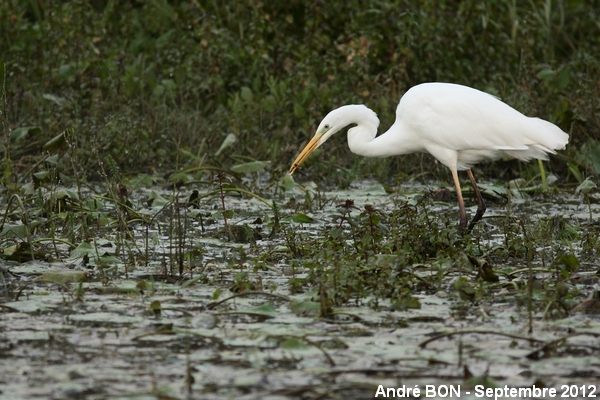
|
I sat in wait here in the hope of seeing some Purple Herons and I have got the visit of a Great Egret. |
| [To know more about the Great White Egret] [Next picture] [Previous picture] [Top] |
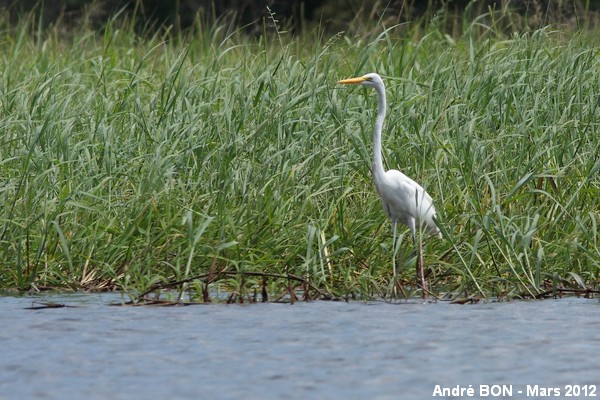
|
I have shot this picture at the Marshes of Caw. |
| [To know more about the Great White Egret] [Next picture] [Previous picture] [Top] |

|
We have been able to get rather close to some Great White Egrets. |
| [To know more about the Great White Egret] [Next picture] [Previous picture] [Top] |
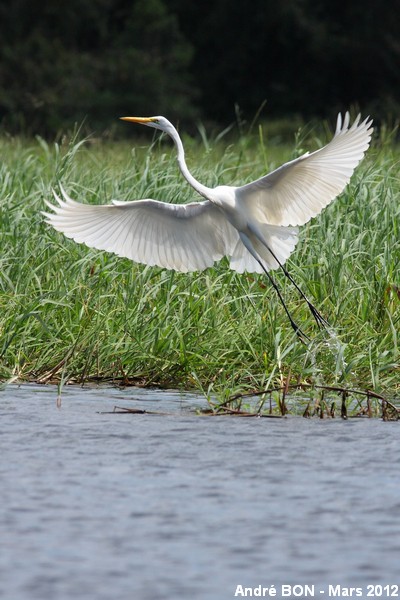
|
We have done very nice ornithological observations during our boat tour thru the Marshes of Caw and we would like now to come back for a longer stay. This Great White Egret took off as we got close. |
| [To know more about the Great White Egret] [Next picture] [Previous picture] [Top] |
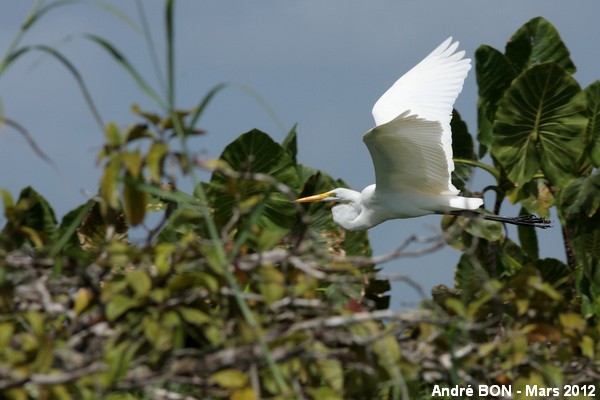
|
In flight. |
| [To know more about the Great White Egret] [Next picture] [Previous picture] [Top] |
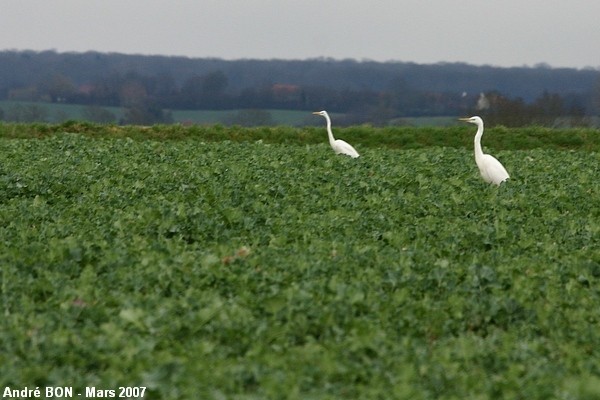
|
Almost every time I go back to my native region, the lower part of the Doubs valley, I can observe Great White Egrets in the cultivated fields. To make progress on photography, you just need to start with poor quality pictures like here. So that it's easier to do better. |
| [To know more about the Great White Egret] [Next picture] [Previous picture] [Top] |
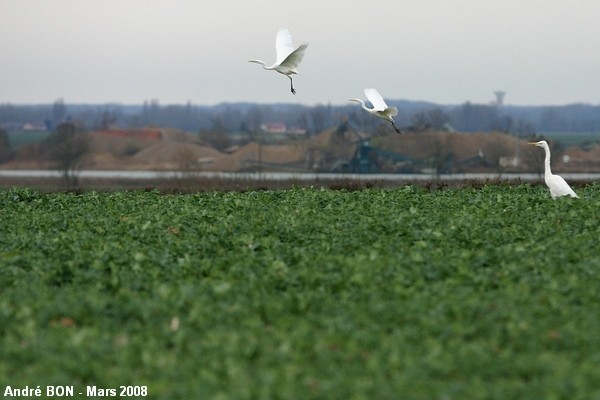
|
I have tried to approach, driving my car along a field path. Great White Egret are not used to seeing cars showing number plates from other regions ;-((. |
| [To know more about the Great White Egret] [Next picture] [Previous picture] [Top] |
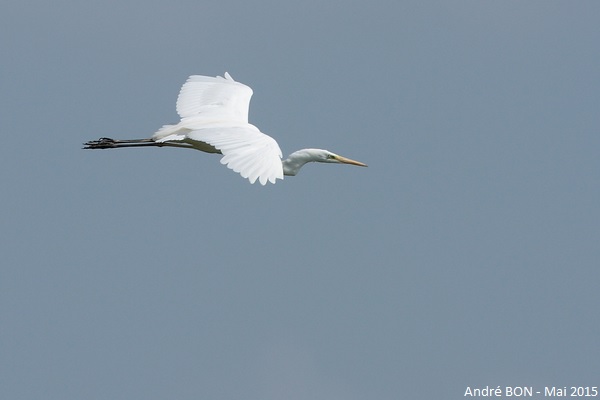
|
In flight. In the Basse Vallée du Doubs Great White Egrets are wintering birds. A very small number of them remain in the region in winter. I think that this one is one of them. No nesting has been observed here to date. |
| [To know more about the Great White Egret] [Previous picture] [Top] |
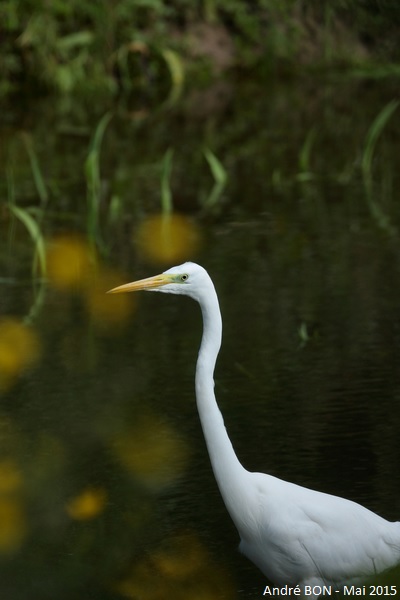
|
When photographing birds you are always too far from the subject but it happens that you are too close in very rare occasions. |